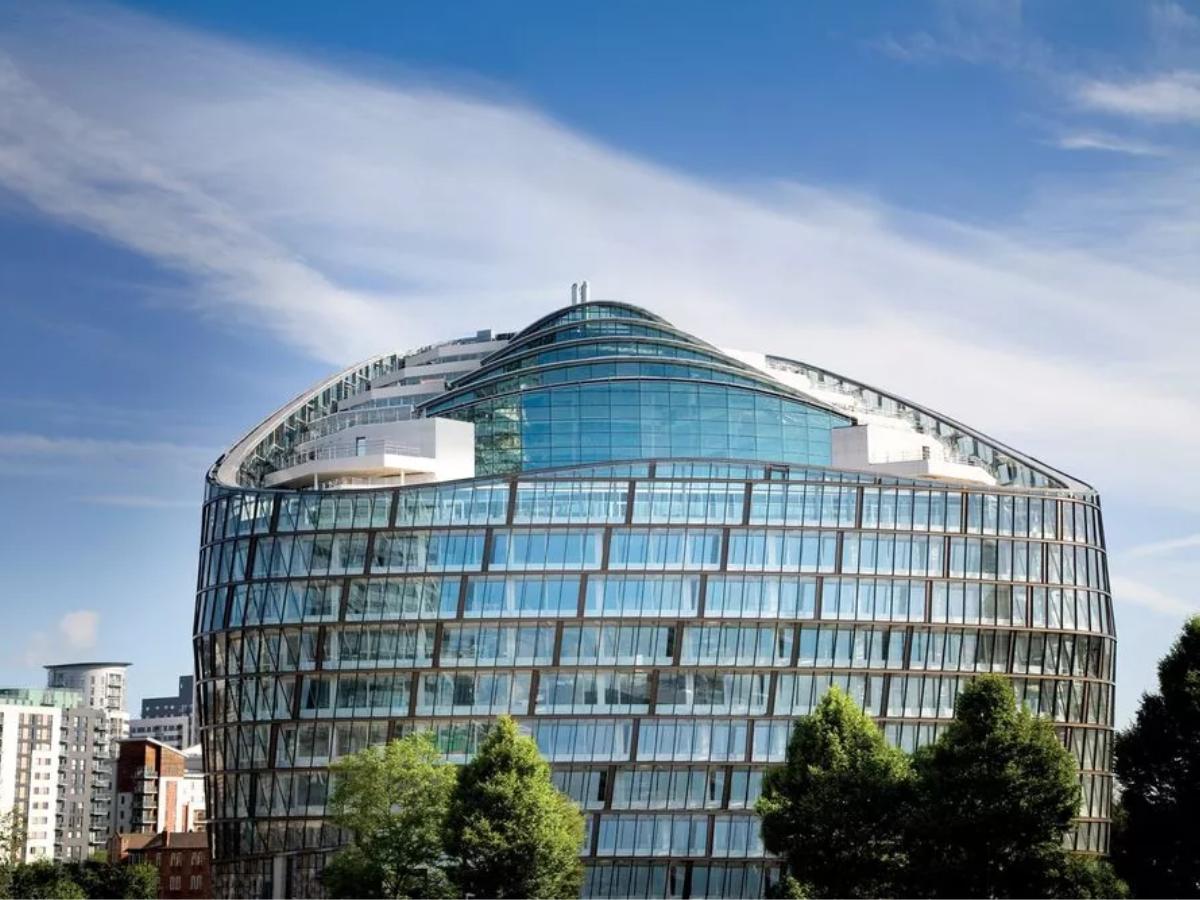
Client: Mitie
Location: One Angel Square, Manchester
Project: Valve replacement
Project Managers: Mark Farrell
The Co-operative Group Building at One Angel Square in Manchester, often known as the Co-op Building was built to be one of the most sustainable large buildings in Europe and is built to a BREEAM ‘Outstanding’ rating.
Power is provided by a biodiesel cogeneration plant that uses Rapeseed oil to provide electricity and heat. The open, highly glazed design of the structure harnesses the natural heat of the sun and the cool of shade to improve efficiency. The design maximises passive solar gain for heat and uses natural ventilation through its double-skin façade, adiabatic cooling, rainwater harvesting, greywater recycling and waste heat recycling.
Decarbonised buildings are becoming more popular today, but when construction work began in 2010 on the 72 metres (238 ft) tall building that sits on 539, 18m piles, it was very unusual and years ahead of its time.
The exterior of the building is often described as looking like a beehive or a giant egg with a slice cut from the top. Inside, the building features primarily open-plan workspaces designed for up to 4,000 people. With a total floor area of 327,643 square feet (approximately 29,000 square feet per floor) it’s a large space, with a high level of dependency on the MEP systems to keep it operating as efficiently as it was designed to do.
With buildings of this scale, there is a sizeable MEP system behind the scenes to keep it operating efficiently. Even with the ‘000’s of projects we have completed successfully as a business, this is still one of the largest plant rooms we have ever seen. And, it’s packed with plant to keep the building cool in summer and warm enough in winter.
The scale of the pipework alone is impressive and there are 10″ diameter pipes throughout and hot water for heating the top floors being delivered from the basement plant room. The pressure within these pipes is enormous and stresses are exacerbated with the heat of the water at 82 degrees within the system. If it cools, the pipe shrinks and the joints contract. This will encourage stress and potentially lead to leakage.
On the original install, most of the joints were butted up to each other and held in place with a flexible gasket between the steel pipes that were externally clamped to hold the two parts tightly together. Unfortunately, some of these joints are beginning to fail and there is some leakage from certain joints within the plant room. As this is the highest pressure area because it carries the greatest head of water, it is the most likely to fail.
Our work has been to repair those joints, valves and flanges that are already failing and refurbish them. We are also working to identify which ones are likely to be next, in order to plan a programme of replacement throughout the system.
The issue is made more of a challenge as the steel pipes are all lagged and where water has leaked and been trapped within the lagging, it has made corrosion of the pipes worse.
We have completed the first 12 of these and opted to refurbish and repair the existing valves and joints. For us, and the Co-op, this fits with our shared sustainable aspirations, and makes good business sense too.
Because of the heat within the pipework, the decision was taken to drain individual sections, rather than freeze them to allow them to cool down, for us to safely work on them without additional protective gear.
Mark Farrell who is the project manager for Kimpton, talking about the project said “It’s a very impressive building and has already presented some interesting challenges.
We’ve worked some weekends when we have needed to isolate the pipework that feeds the Calorifiers and as such, the heating, but in the main, we have worked within normal working hours.
For each individual section, we estimate how long the specific project will take, bring the building up to temperature and then drain it down to complete the work. With good planning and by working as a team, this has worked seamlessly so far, so let’s hope it continues.”
If you would like to discuss any of our services, please call 0151 343 1963 or complete the form below and we will be in touch shortly.